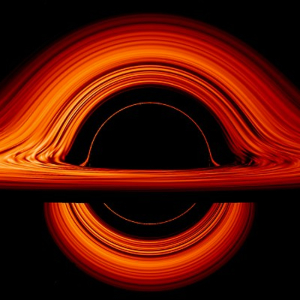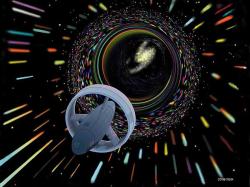We may have already spotted the wormholes. Gravity lensing would reveal them
Black holes are the bizarre offspring of general relativity. But there may be even stranger monsters in space. Wormholes, or tunnels in space-time, are a popular science fiction item. Scientists no doubt like them, but so far we haven’t had the privilege of dealing with them. In the 1930s, Einstein’s collaborator Nathan Rosen came up with the idea that the existence of wormholes was at least theoretically possible. Since then, wormholes have been studied using equations. At the moment, it appears that under certain circumstances matter can pass through such a wormhole, seemingly intact.
At the same time, it is possible that we have actually already found wormholes. It may be that virtually all the black holes we observe in the universe are the mouths of wormholes. It’s just hard to tell them apart from classic black holes. Naturally, physicists are not giving up. If the researchers from the Bulgarian team at Sofia University are right, then there is a way to distinguish wormholes. But we should be very lucky. Galin Gyulchev and his colleagues created a simplified model of a wormhole’s mouth, in the form of a ring of magnetized liquid.
At the same time, they made different hypotheses about how matter should behave near the entrance to a wormhole. Particles trapped in a gravitational vortex near a wormhole are supposed to generate powerful electromagnetic fields that are expected to have a certain pattern. Consequently, the polarized radiation of heated matter should have a specific character in such an object. The problem is that in the case of classical black holes the polarized radiation is very similar.
According to the Bulgarian team, a lucky discovery could lead to the solution. If we encounter a suitably placed gravitational lens, if there is a suitable material object between the black hole, suspected to be actually a wormhole, and us, staring at the black/wormhole in question. Such a gravitational lens could reveal the true nature of the target object. Moreover, there is another option which also relies on a huge fortune. If we were to find a black hole/wormer whose radiation comes at us at a specific angle, it should also be possible to distinguish which object in question actually is.
Clearly, more research is needed in this area when it comes to radiation from objects like black holes or wormholes. It could lead us to definitive answers to what we actually observe in the universe. At the same time, it is clear that we are interested in wormholes not only as a fantastic physical phenomenon, but also as a possible technology to be tested throughout the universe. Who wouldn’t want to look at other stars or even alien galaxies?
Literature
Scientific Alert 15. 11. 2022.
Physical revision D 106: 104024.




